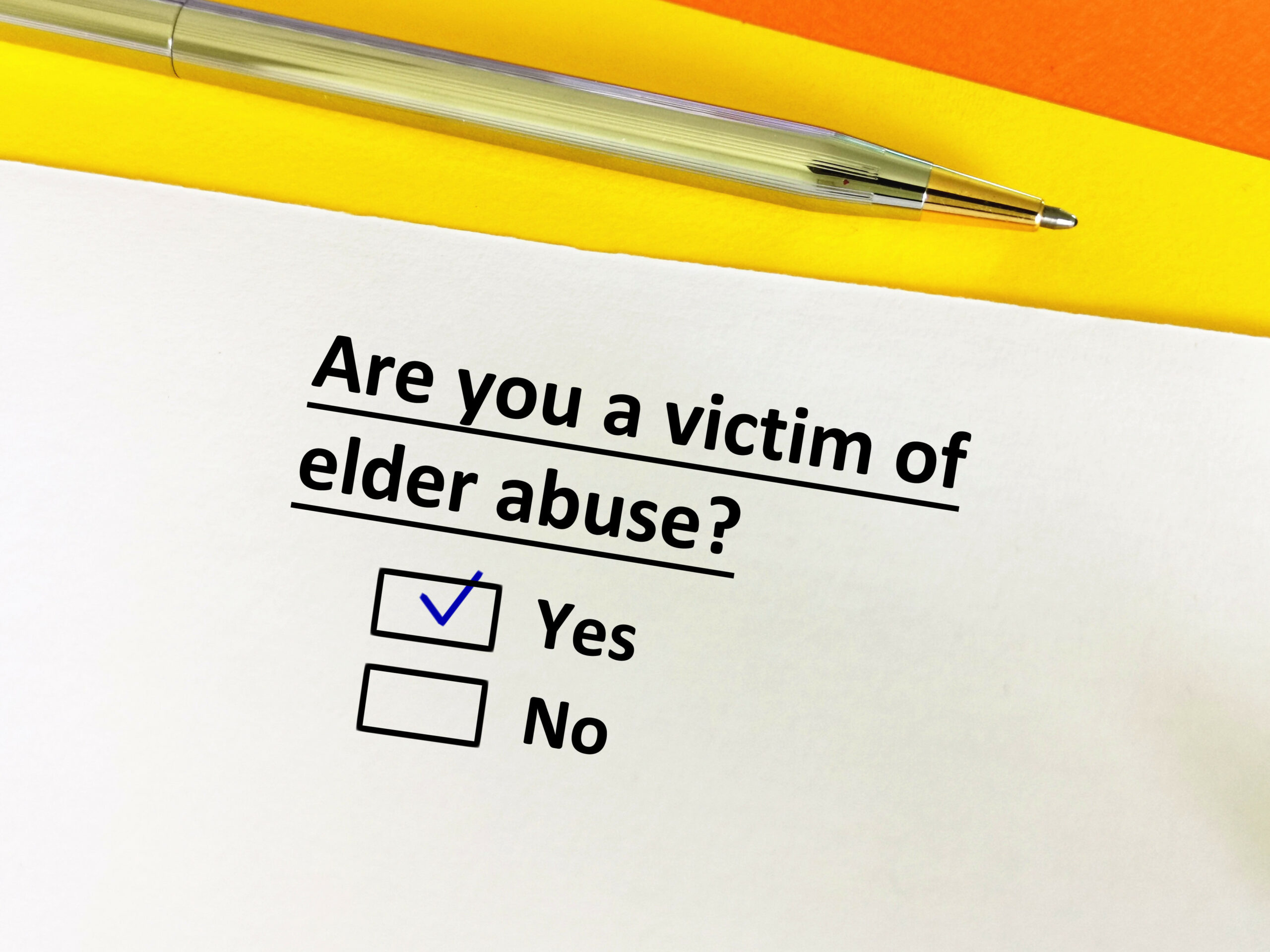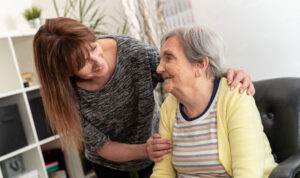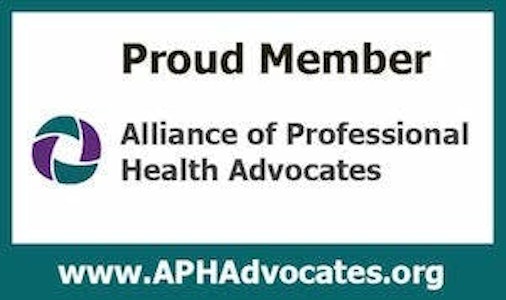In this blog post, we will share some statistics surrounding elder abuse, explore the various forms it can take, and share this guide to learn how to recognize the signs of elder abuse. Join us on this journey as we shed light on this important issue and empower adult children or other family members to take action. As our loved ones age, it is crucial to be aware of the prevalence of elder abuse and to recognize and understand the different types that can occur. It is a difficult topic to discuss, but being informed and vigilant is essential in protecting our aging parents or relatives.
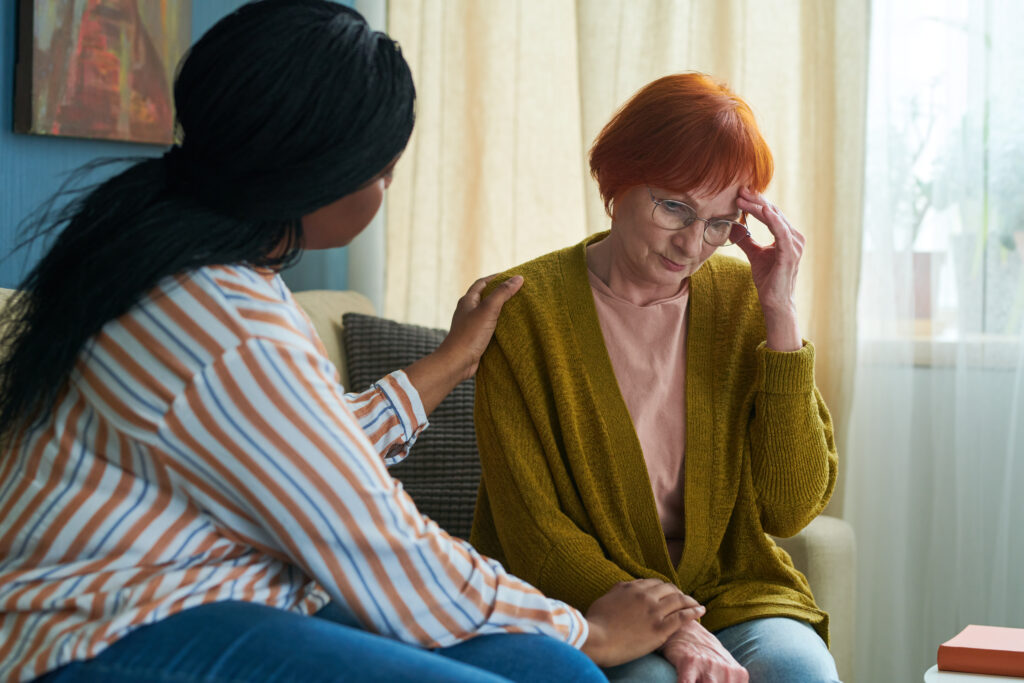
Elder abuse encompasses a range of mistreatment that older adults may experience, including physical, emotional, financial, sexual, or neglectful behaviors. According to the National Council on Aging (NCOA), approximately 1 in 10 Americans aged 60+ have experienced some form of elder abuse. This statistic is alarming and highlights the widespread nature of this issue. It is crucial for adult children to be aware of these numbers and stay vigilant in monitoring their loved ones’ well-being.
What is also disturbing is that many times it is a family member that may be causing one or more of the types of abuse we encounter. When our loved one lives in a form of senior living such as an assisted living facility or a nursing home they may not always be protected from elder abuse. We need to be vigilant in our efforts to be aware. Aging adults with some form of dementia can be more vulnerable than others. We are going to discuss this topic at length during our Senior Care Summit 2024 beginning March 1, 2024.
During my time in home health, I was assigned to provide services to an elderly woman out in the rural area of our county. Upon receiving the referral everything seemed to be in order and standard. No red flags or other concerns were noted at the time of the referral. This elderly woman had just been discharged from the hospital and started on new doses of medications. My assignment was to assist in checking out and assessing her chronic condition of Congestive Heart Failure and how she was managing with her new medication changes. She also had a recent urinary tract infection.
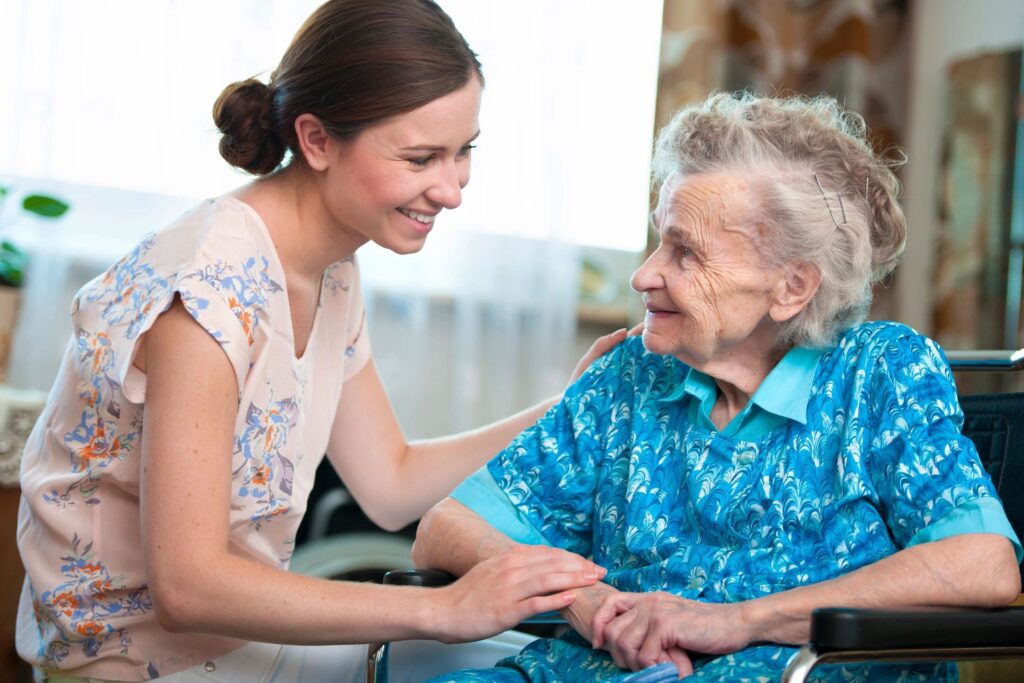
She was living with her son and daughter in law as well as a couple of grandchildren. Everything seemed great on the outside. It sounded like she had help at home and family that was concerned for her. We set up the visit with her son, her Activated Power of Attorney. My new patient also had some dementia we were told. Everything seemed good to go. We verified her Medicare and that was going to pay 100% of her visits with us. No cost to the family to have us come out.
We set the appointment, and it was time to make the visit. When I got there, she was alone and tied to a recliner. I couldn’t believe what I was seeing and to think her family thought this was, ok? She had a pair of briefs on (Depends) and was told to just “pee in your Depends.” She could explain to me that they told her they didn’t want her to fall trying to go to the bathroom. A snack table sat next to the chair with a sandwich and glass of juice next to it in case she got hungry before anyone got home. My new patient told me her grandson gets home around 3:30 from high school and he would untie her and take her to the bathroom.
She seemed pretty clear in her ability to communicate with me as she shared her story, she rationalized in her mind why they tied her to the chair. I completed my assessment and the rest of the tasks for my visit and left. I didn’t know what to do at that point. How could I leave her there tied to the chair? I reached out to our social worker. She contacted the son and made arrangements for a visit. She said it was routine and the son agreed to the appointment.
When the social worker got there everything was gone. The police were called for a “welfare check.” The entire family had fled. Gone, their home was very close to the state line and now they could have easily vanished across the border. The sad thing is I never learned if they found them. I was worried they were going to do it all over again. It was obvious they didn’t want to lose whatever money my patient was getting or had. They went to great lengths to keep her at home even at the expense of keeping her tied to a chair!
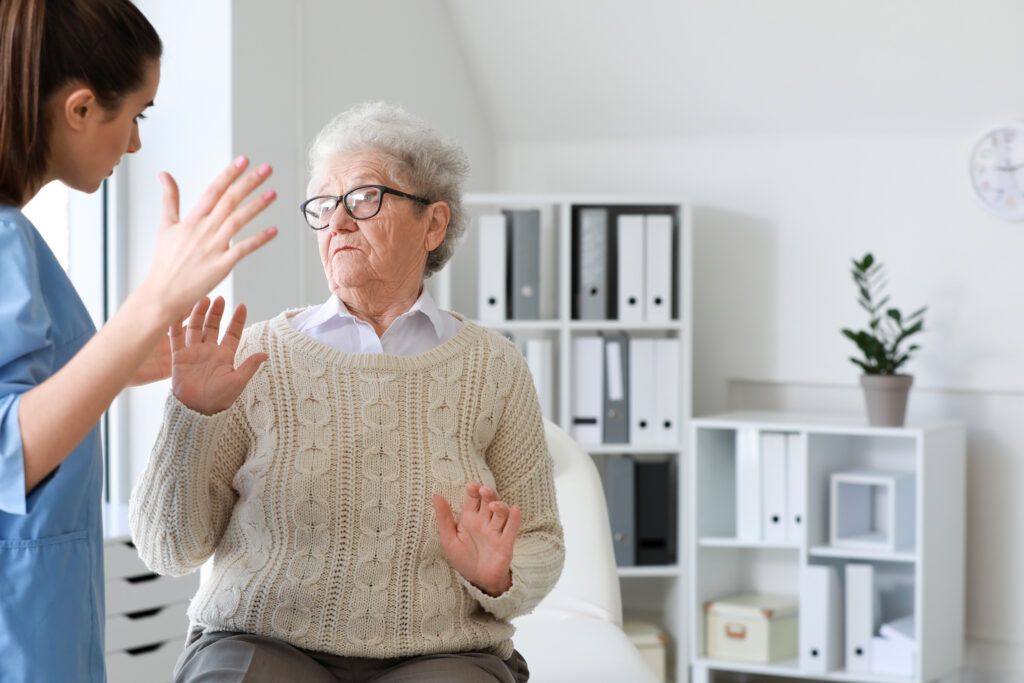
What are the Types of Abuse?
- Physical abuse involves any form of harm inflicted on an elderly person, such as hitting, pushing, or restraining them.
- Emotional abuse includes verbal assaults, threats, intimidation, or isolation that can cause psychological distress.
- Financial exploitation occurs when someone takes advantage of an older adult’s finances for personal gain.
- Sexual abuse involves non-consensual sexual contact with an elderly person.
- Neglect is another common type of elder abuse that involves failing to provide necessary care or support.
Recognizing the signs of elder abuse can be challenging but paying attention to changes in behavior or physical appearance can help identify potential issues. Some red flags may include unexplained injuries or bruises, sudden withdrawal from social activities, significant weight loss without medical explanation, unusual financial transactions or missing valuables, and signs of fear or anxiety around certain individuals. Trust your instincts and don’t hesitate to seek help if you suspect something isn’t right.
We see men and women wanting to return home or be reunited with their abuser. They love them and hope that the abuse will stop. With our aging loved ones they may be hesitant to speak up, if able, due to the fact that their everyday living tasks are dependent on someone else, and they may feel they need to “put up” with the abusive behavior because where would they be if that person was not there?
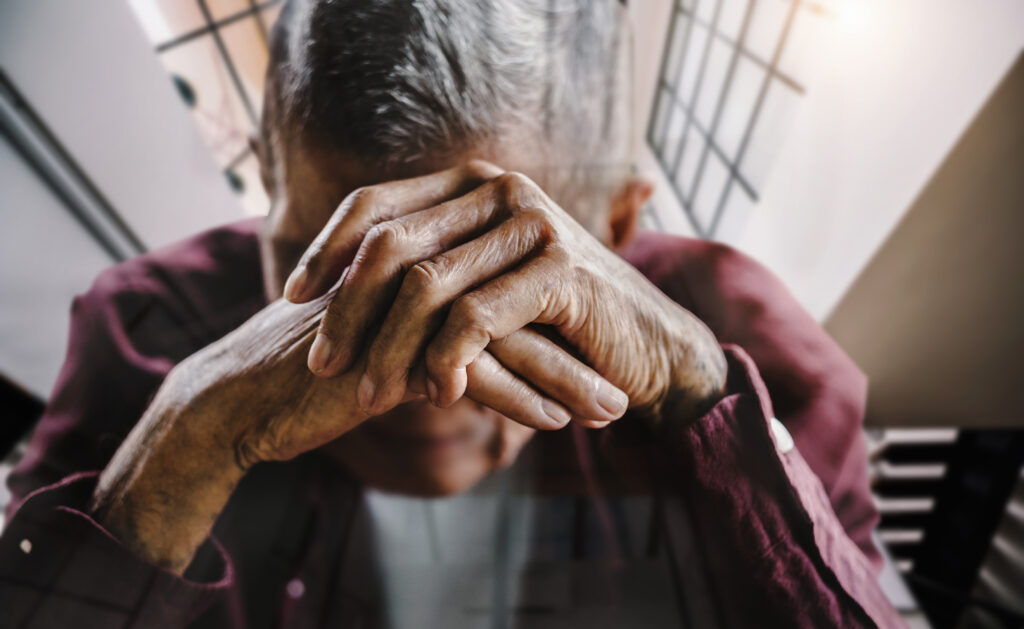
Samantha Pierson, Client Services Director, Turning Point for Victims of Domestic and Sexual Violence, shares her presentation at the Senior Care Summit 2024 where she emphasized the importance of creating a plan to address elder abuse situations effectively. If you suspect that your aging parent or relative is experiencing abuse, it is essential to take immediate action by contacting local authorities or adult protective services for assistance. Removing them from an abusive environment and providing them with support services are crucial steps in ensuring their safety and well-being. Removing someone may not be as simple as it seems. Samantha talks about the planning process and a successful transition away from the abuse. Samantha shares some other staggering statistics including elderly and sexually transmitted disease.
Conclusion: Elder abuse is a serious issue that requires our attention and proactive efforts to combat it effectively. By understanding the prevalence of elder abuse, recognizing the different types that exist, and learning how to identify potential signs of mistreatment, we can better protect our aging parents or relatives from harm. Remember that you are not alone in this journey; resources such as local agencies, abuse helplines, and support groups are available to assist you in addressing elder abuse concerns effectively. Let’s stand together as advocates for our loved ones’ safety and dignity as they age gracefully.
Consider joining us at the Senior Care Summit 2024 and hear from over 32 experts and topics relating to caring for our aging adults. This and so many other topics will be covered. Healthcare topics as well as supportive topics for caregivers, home and environment topics, navigating the healthcare system, and lastly legal and financial topics such as this topic today of elder abuse.
Thank you for stopping by and spending a few minutes with us to share information on this sensitive topic. We will continue to bring you relevant information on topics surrounding care of our aging adults and their families.
See you back here soon,
Pam and Linda,
Your Nurse Advocates
Your Nurse Advocate Consulting, LLC
“Compassionate care for aging adults and peace of mind for the adult children.”
https://www.turningpoint-wi.org/get-involved/
https://www.nia.nih.gov/health/elder-abuse
Elder abuse is a serious issue that affects many older adults. It can take many forms, such as physical, emotional, financial, or sexual abuse, neglect, or exploitation. Elder abuse can harm an individual’s health, well-being, and dignity. It can also cause isolation, depression, and anxiety. If you or someone you know is experiencing elder abuse, you are not alone. There are many resources and services available to help you. Here are some steps you can take to get help:
- If you are in immediate danger, call 911 or the local police. They can provide emergency assistance and protection.
- If you are not in immediate danger, but need support and guidance, call the Eldercare Locator at 1-800-677-11161. This is a free, confidential service that connects you to local agencies that can help you with elder abuse issues. They can also provide information on other topics, such as legal assistance, health care, housing, and transportation.
- If you suspect elder abuse in a long-term care facility, such as a nursing home or assisted living, contact the Long-Term Care Ombudsman in your state2. This is an independent advocate who can investigate complaints, resolve problems, and protect the rights of residents.
- If you want to learn more about elder abuse, its signs, causes, and prevention, visit the websites of the National Institute on Aging3 and the American Psychological Association2. They have helpful articles, infographics, and tips on how to spot and stop elder abuse.
- If you want to report elder abuse or get legal advice, contact your state’s Adult Protective Services or Elder Abuse Hotline4. They can investigate cases of abuse, provide assistance and referrals, and initiate legal action if needed.
Elder abuse is a complex and sensitive problem that requires compassion and action. You have the right to live with dignity, respect, and safety. Don’t hesitate to reach out for help if you need it. You are not alone. 💙

